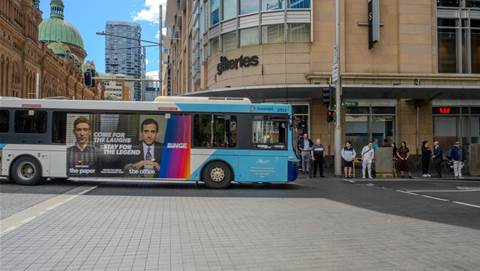
The invention, patented by Philips but built by spin-off company Polymer Vision, consists of a layer of small spheres, coloured grey on one side and white on the other.
They are rotated to display text and images on the paper, but critically use no power when not creating a new image.
This technique has been manufactured in a thin strip that is perfectly flexible, allowing the screen to be wrapped around a mobile phone.
The screen on show at 3SGM had been wrapped and unwrapped 750,000 times with no degradation in quality.
"We have talked to the BBC and Reuters and they are happy using a technology like this," said Ewan Ward-Thomas, a consultant at Polymer Vision. "After all, newspapers used greyscale printing like this for over 400 years."
Ward-Thomas envisioned mobile newspapers that could be broadcast via a built-in Sim card and downloaded for consumption, or connecting wirelessly to an existing mobile screen.
The test system typically had an 8-10 day battery life with similar systems.
Philips is in discussions with network operators about offering the technology to consumers, and the manufacturing process is sufficiently well advanced that it can be made in 5in-wide, 300-metre strips, similar to wallpaper.
Last night the company won the 3GSM Most Innovative Technology award at a ceremony in Barcelona.


.png&h=140&w=231&c=1&s=0)





.png&w=100&c=1&s=0)

 iTnews Benchmark Security Awards 2025
iTnews Benchmark Security Awards 2025
 Digital Leadership Day Federal
Digital Leadership Day Federal
 Government Cyber Security Showcase Federal
Government Cyber Security Showcase Federal
 Government Innovation Showcase Federal
Government Innovation Showcase Federal
 Digital NSW 2025 Showcase
Digital NSW 2025 Showcase












_(1).jpg&h=140&w=231&c=1&s=0)



